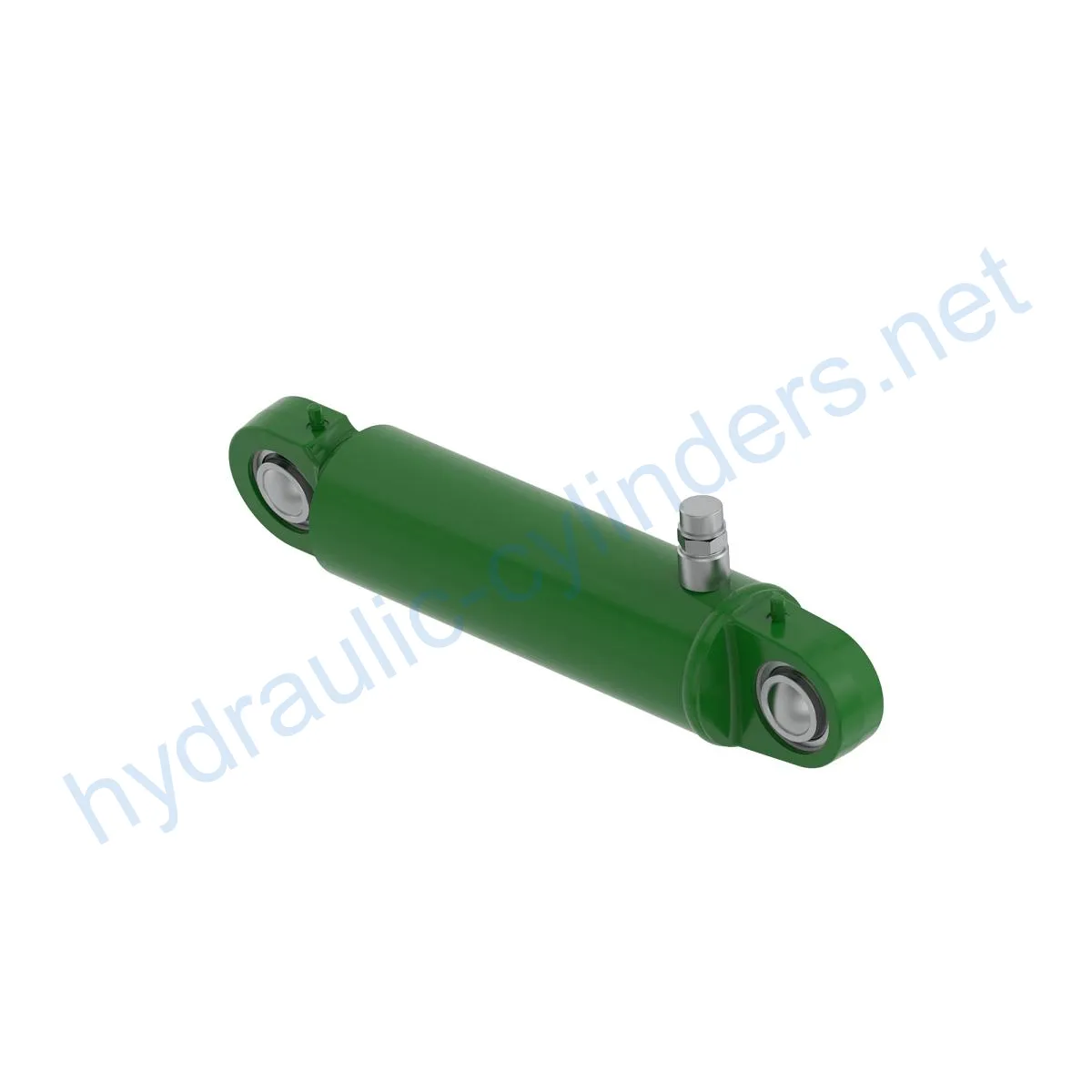Replacement Of AL213020 Lift Hydraulic Cylinder
Replacement Of AL213020 Lift Hydraulic Cylinder
The Replacement Of AL213020 Lift Hydraulic Cylinder is a crucial component used in various models of John Deere equipment, including 6010, 6020, 6100, 6100 MC, 6100J, and many others. This hydraulic cylinder is designed to provide reliable lifting and hydraulic power to ensure optimal performance of the equipment.
Specifications
- Weight: 35 lb
- Height: 5.5 in
- Length: 18.4 in
Product Models
Compatible Models: 6010, 6020, 6100, 6100 MC, 6100J, 6105M, 6110, 6110 MC, 6110J, 6110L, 6120, 6120L, 6125J, 6125M, 6130J, 6200, 6200L, 6205, 6210, 6210L, 6215, 6220, 6220L, 6225, 6230, 6300, 6300L, 6310, 6310L, 6320, 6320L, 6325, 6330, 6400, 6400L, 6410, 6410L, 6415, 6420, 6420L, 6420S, 6500L, 6505, 6510L, 6510S, 6515, 6520, 6520L, 6615, and 6620.
Product Features
- Improved Equipment Performance: Replacing damaged or worn hydraulic cylinders can restore the equipment’s normal operational capabilities, ensuring its performance in various applications.
- Enhanced Safety: Regularly replacing hydraulic cylinders can reduce safety hazards caused by cylinder failures, ensuring the safety of operators and equipment.
- Overload Protection: New cylinder designs often incorporate better overload protection mechanisms, increasing safety.
- Quick Installation: Modern hydraulic cylinders are designed with ease of installation and replacement in mind, reducing downtime.
- Standardized Components: Many hydraulic cylinders are standardized products, making it easy to obtain replacement parts in the market.
We specialize in manufacturing hydraulic cylinders that perfectly replace these models. Our products are designed to meet the same specifications and provide reliable performance.
Applications
- Excavators: Hydraulic cylinders in excavator arms or buckets may get damaged due to prolonged use or overload, requiring replacement to restore normal operation.
- Cranes: The hydraulic cylinders in crane boom arms are prone to wear during frequent lifting and lowering processes, necessitating regular replacement to ensure safety.
- Tractors: Hydraulic cylinders in front-end loaders of tractors may experience leaks or performance degradation during continuous lifting and tilting operations, requiring replacement.
- Harvesters: Hydraulic systems endure high pressures during harvesting, and cylinders may suffer fatigue damage, necessitating timely replacement to maintain work efficiency.
- Automated Production Lines: Hydraulic cylinders are used to control robotic arms and other automated equipment. Cylinder failures can impact production efficiency and should be replaced immediately.
- Die Casting Machines: In high-pressure and high-temperature environments, hydraulic cylinders may experience performance degradation. Regular replacement ensures product quality.
- Mining Equipment: Hydraulic cylinders are used for lifting and moving heavy loads in mining equipment. Due to harsh working conditions, regular inspection and replacement are necessary to avoid equipment failures.
- Bulldozers: Wear of hydraulic cylinders in bulldozer blade arms can lead to decreased pushing capacity, requiring timely replacement to maintain operational efficiency.
Maintenance Tasks
- Regular Inspection: Perform routine checks to identify any signs of wear, leaks, or other issues with the hydraulic cylinder.
- Proper Lubrication: Ensure the hydraulic cylinder is adequately lubricated to minimize friction and extend its lifespan.
- Seal Replacement: Replace worn or damaged seals to maintain the cylinder’s integrity and prevent hydraulic fluid leaks.
- Calibration Check: Periodically check and adjust the cylinder’s calibration to ensure accurate and precise operation.
During installation, provide proper alignment guidance for aligning the cylinder correctly. It is recommended to use appropriate installation brackets to secure the cylinder. We offer inspection, repair, and replacement services to enhance the longevity of your hydraulic cylinder.
Safety Considerations and Environmental Factors
When using hydraulic cylinders, it is crucial to follow safety precautions. Implementing safety measures is essential to protect operators and prevent accidents. Additionally, considering environmental factors such as proper disposal of old cylinders and using eco-friendly hydraulic fluids can contribute to a sustainable approach.
Troubleshooting and Common Issues
- Issue 1: Cylinder fails to extend or retract.
- Solution: Check for any hydraulic fluid leaks, inspect the control valves, and ensure proper oil flow to the cylinder.
- Issue 2: Slow or jerky cylinder movement.
- Solution: Check for low hydraulic fluid levels, inspect the hydraulic pump, and ensure proper cylinder lubrication.
- Issue 3: Excessive noise or vibration during operation.
- Solution: Inspect the mounting brackets, check for loose connections, and ensure proper alignment of the cylinder.
By following these troubleshooting tips, you can effectively diagnose and resolve hydraulic cylinder problems. Additionally, preventive measures can help minimize potential issues, ensuring smooth and efficient operation.

Design Considerations and Selection Criteria
When selecting hydraulic cylinders, it is essential to consider design aspects such as load-bearing capacity, sealing effectiveness, durability, safety features, and ease of maintenance.
Sealing and Lubrication
Our hydraulic cylinders utilize various sealing components, such as piston seals and rod seals, made from wear-resistant materials like polyurethane and nitrile rubber. The cylinder body and threaded ends undergo meticulous surface treatment to enhance wear resistance. Regular lubrication with the appropriate hydraulic oil is essential for optimal performance.
Regular Inspection
参观我们的 VR 工厂
通过以下方式参观我们的 VR 工厂
液压缸应用:


